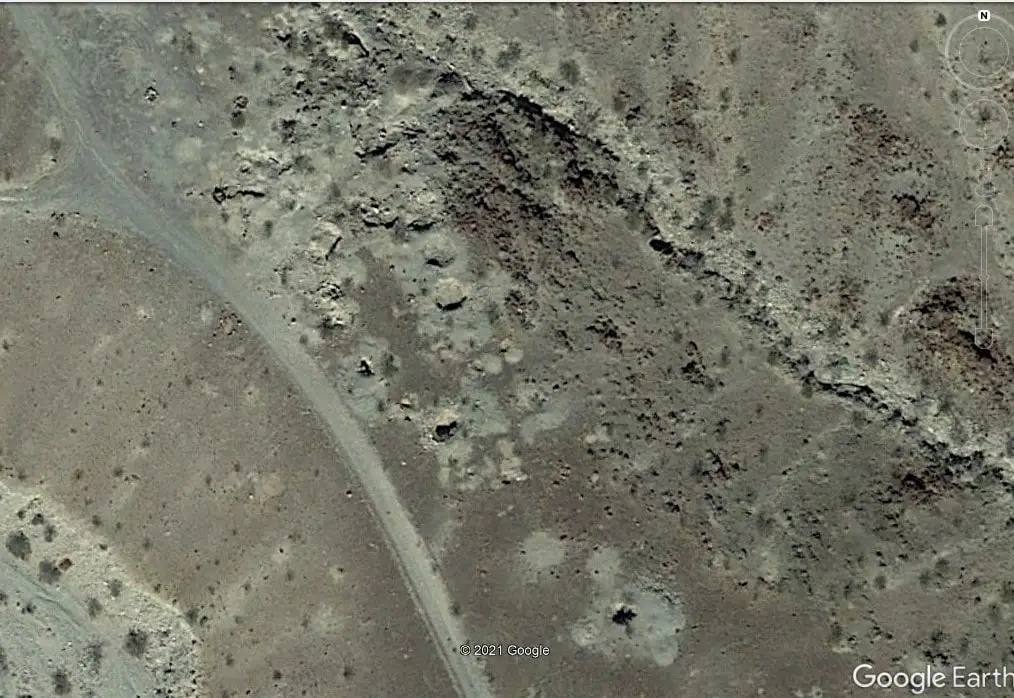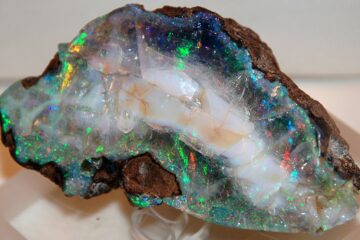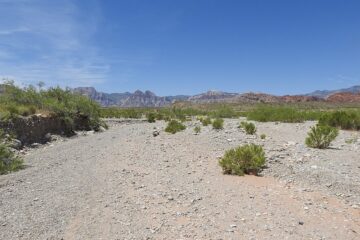Gold drywashing basics
Drywashing machines or drywashers are used to separate gold from gravels without the need for water. The arid desert southwest still has large placer gold areas that have not been worked on a commercial level, because of difficulties recovering gold without using water, especially on a large scale. Small modern drywashers actually work quite well though and there are many areas to drywash for gold across the desert southwest.
Drywashing is less efficient than wet methods such as sluicing and dredging, at least for fine gold. Also, gold deposits in desert areas tend to be less concentrated than in areas with seasonal streams and rivers.
Desert placers lack the sorting action of constantly flowing water. Desert placers will tend to have pay streaks of gold on various levels within the gravels, sometimes gold in flood layers, sometimes gold pay layers on or in cemented gravels, known as caliche. And of course, gold on bedrock.
 Drywashers work by forcing air up from below the riffle tray, thereby suspending the gravels and allowing the heavier, denser particles of gold to sink and become trapped behind the riffles.
Drywashers work by forcing air up from below the riffle tray, thereby suspending the gravels and allowing the heavier, denser particles of gold to sink and become trapped behind the riffles.
Modern drywashers are usually powered by a small gasoline engine, although some still use the bellows method, usually, the smaller hand-made ones.
The better ones also have fan blades in the airstream that turn a small eccentric cam, which creates a vibration that also helps the gold settle through the gravels. Some modern drywashers also create a small electrostatic charge caused by hot air moving across plastic and up through the riffle tray fabric.
Fine gold has an affinity for an electrostatic charge and this charge will help hold very fine gold particles that otherwise would be lost.
How to drywash for gold
When you set up your drywasher make sure it is stable and on level ground. Make sure the riffle box is level from side to side.
Make sure that you have plenty of room for the tailings that will build up as you run material off the end of the riffle box. If you set it up on the edge of a slope, gravity will help take the tailings out of your way. You will need to tune the drywasher too. If the riffle tray is too steep, you will lose gold. If it is too flat, it will bog down with gravel.
I add several pieces of lead shot of different sizes to a bucket of gravel, then run the bucket until, by adjusting the tilt of the tray, the lead is caught behind the top two riffles. A bit of paint on the lead will help you find them. You will get a feel for it.
I prefer to fill 5-gallon buckets about half to two-thirds full. That way you can feed the drywasher evenly, and you can keep track of roughly how much gravel you’ve processed. 40 to 50 pounds per bucket.
Late spring and, unfortunately, summer is the best time to drywash gold. Drywashers do not work well if the material has any moisture in it. If the moisture is not too bad, you can spread the gravel thinly across a tarp and let it dry. This will probably take some time though, a few hours to a day or more. A properly set up drywasher should be able to process a yard, or more, of gravel a day.
Where to drywash for gold
There are many areas in the deserts of California, Arizona, and Nevada to drywash for gold. Places to check are in and around old mining districts that were known for placer gold production. Placer Gold Deposits of Arizona and Placer Gold Deposits of Nevada are excellent reports and will help narrow your search.
Generally speaking, there are a few types of dry desert placers. The first is where dry washes exit the steeper canyons and the ground starts to flatten and spread out. This is where gold will drop out and settle as the water velocity lessens.
Gold in this type of deposit will usually be in flood layers over a fairly wide area, above bedrock, and many times the richer ground may not be in the main washes, but above them in older bench deposits. Bedrock in these areas may be very deep and impossible to reach.
As you travel up the smaller side canyons and washes, always look for exposed bedrock. Bedrock is where most gold will concentrate. If you find areas in the washes with only a foot or two of gravel, you will want to try to dig down to bedrock, as it may be quite rich in gold.
In these spots, you will do well to carry a cordless shop-vac to clean out the cracks and crevices in the bedrock. Another excellent addition to your dry placer setup would be a dedicated VLF gold detector. I would recommend either the Minelab Gold Monster 1000 or the Fisher Gold Bug 2. Both of these detectors are excellent at recovering very small pieces of gold. The detector can help trace gold back to a deposit. You can then bring in your drywasher to process the rich gravels. Check out 6 Best Metal Detectors for Gold Prospecting for more.
See Finding Gold in Desert Washes for more types of desert placers.
 Personally, I have done well drywashing in the Dale Mining District in the Mojave Desert about 20 miles east of 29 Palms, California.
Personally, I have done well drywashing in the Dale Mining District in the Mojave Desert about 20 miles east of 29 Palms, California.
The screenshot above shows an area in the Dale District where I’ve consistently drywashed good quantities of gold. One outing to this spot netted me over 13 grams in one day.
This is an elevated bench deposit with a flood layer about 18 to 24 inches down. The deposit has been worked by many people over many years and still has a lot of unworked ground.
This area is known for good-sized nuggets in the one and two-gram range, and larger. Believe it or not, I know a guy that detected a 7 ounce and a 2.5-ounce nugget not far from this bench.
The Cargo Muchacho Mountains in eastern California, not far from Yuma have been good to me too. The gold placers of western Arizona can also be worth visiting. These are just examples of a few of many areas to prospect and drywash for gold.


